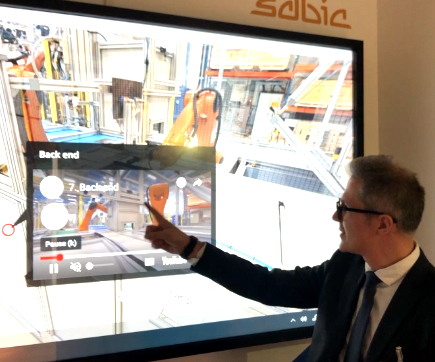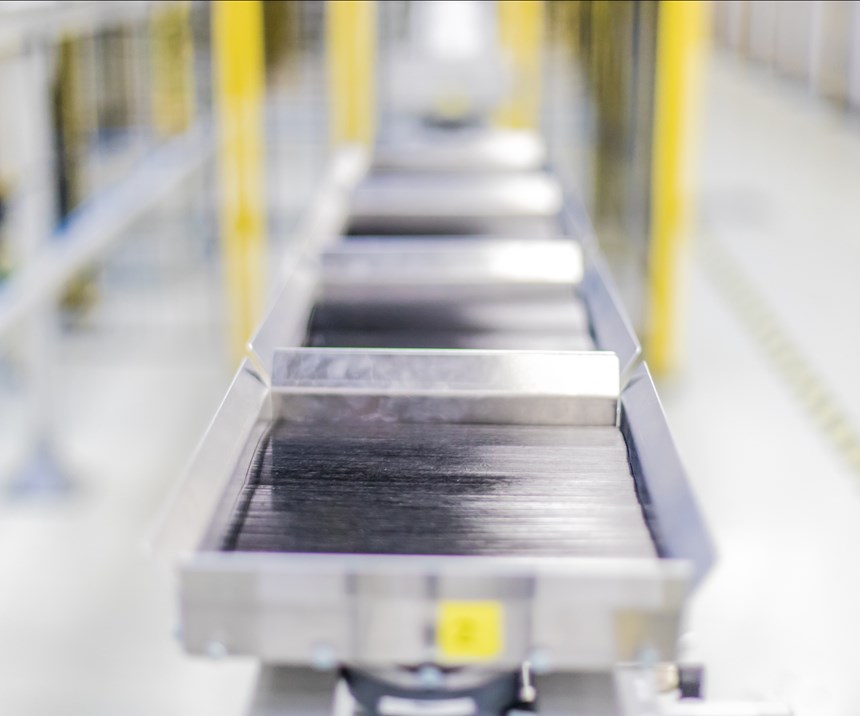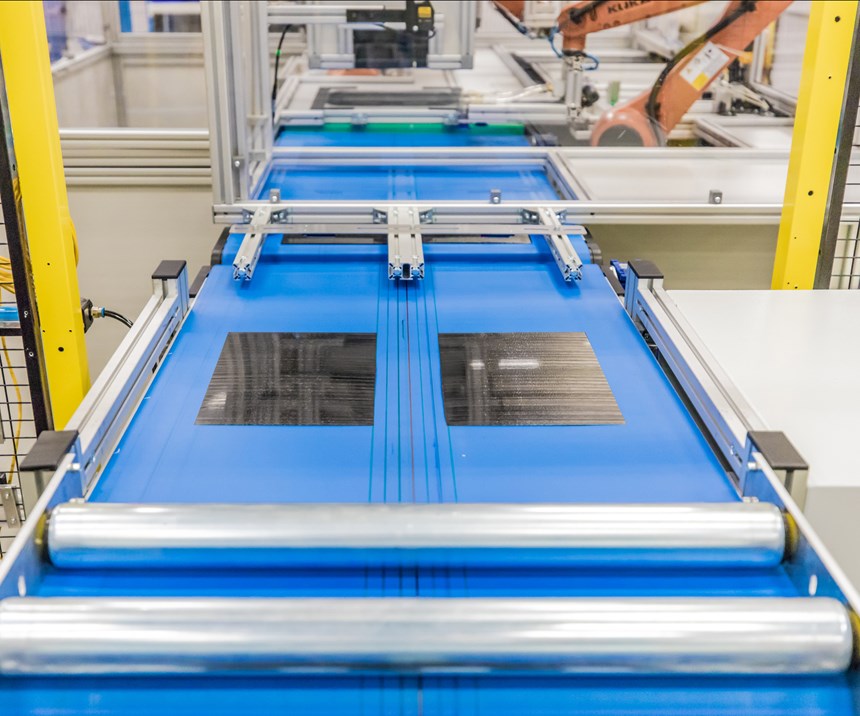SABIC's innovations of scale
SABIC at JEC World 2019 offered a virtual reality-based peek at its new Digital Composites Manufacturing line — a collaboration with Airborne aimed at automated, large scale laminate production of thermoplastic composite parts.
SABIC (Sittard, Netherlands) at JEC World 2019 offered a virtual reality-based peek at its new Digital Composites Manufacturing line — a solution for automated, large scale laminate production of thermoplastic composite parts that the company developed in partnership with Airborne (The Hague, Netherlands) and powered by Siemens (Munich, Germany) and Kuka (Augsburg, Germany) technologies.
The display, which was called “Innovations of Scale,” offered a look at aspects of the manufacturing line which is designed for large-scale manufacturing of custom-made, thermoplastic composite laminates. The line uses digital technologies including robotics to enable customization of flat laminates while reducing cycle times and cost. The system is reportedly capable of producing four laminates every 60 seconds — 1.5 million parts per year.
The manufacturing line is comprised of three major systems. Its front-end system handles high-speed feeding of UD tapes. There the tapes are inspected, laminated and tack welded into preforms. From there the preform moves to an automated press system for high-speed consolidation — no cure is involved, only melt, flow, consolidation and cool due to the use of thermoplastic composites (TPCs). The consolidated part is then trimmed and inspected for dimensions, flatness and surface defects. Machine learning and artificial intelligence are said to be employed in the inspection process to achieve continuous improvements over time.
Currently the line is set up for SABIC’s materials, but can be customized.
“The line is made for our material and fine-tuned currently for polycarbonate; however, the line is flexible. So can tailor it for different matrix/fiber materials/combinations,” says Markus Kremers, CTO for SABIC. “This is a starting point for us. We are now producing thousands of parts, by 2019 we will reach hundreds of thousands, getting ready for notebook computer manufacturers. We can then tailor the line for other polymers.”
Related Content
-
Composites end markets: Electronics (2024)
Increasingly, prototype and production-ready smart devices featuring thermoplastic composite cases and other components provide lightweight, optimized sustainable alternatives to metal.
-
Thermoplastic composites: Cracking the horizontal body panel nut
Versatile sandwich panel technology solves decades-long exterior automotive challenge.
-
Plant tour: Joby Aviation, Marina, Calif., U.S.
As the advanced air mobility market begins to take shape, market leader Joby Aviation works to industrialize composites manufacturing for its first-generation, composites-intensive, all-electric air taxi.



















